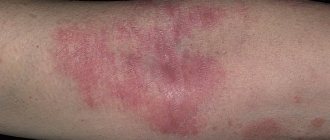A condition in which the eye is swollen and red may not only be a beauty defect caused by a lifestyle disorder. Redness and swelling of the eyes, especially those that do not disappear during the day, may have another cause: mechanical or chemical irritation, the onset of serious diseases, be signs of a chronic disease, or lead to vision damage. What can cause red eyes and puffiness under the eyes? What home “first aid” remedies will help combat redness and swelling?
Common reasons
Around the human organs of vision there are very delicate tissues that are susceptible to infections and allergens: eyelids, tear ducts, highly sensitive skin. Therefore, the causes of redness around the eyes in adults and children can be very different. Conventionally, they are divided into internal and external.
External ones include:
- using cosmetics to which adults may be allergic. Either the product itself is of poor quality or expired;
- stress or psycho-emotional overstrain, during which hormones are intensely produced, causing redness of the skin around the eyes;
- allergic reaction to any irritant;
- intolerance to the medications used;
- injuries, mechanical damage to the skin.
Eliminating provoking factors will help completely get rid of the unpleasant symptom. However, in some cases, recovery will require the use of drug therapy.
Internal causes include various diseases in which swelling and redness of the face around the eyes are observed:
- liver diseases;
- fungal infections;
- infectious diseases;
- viral infections (herpes, adenovirus);
- metabolic disease;
- dermatological diseases;
- inflammatory processes;
- hypertension and hypertension.
Such problems require diagnosis and adequate treatment, which must take place under medical supervision.
Allergy
Due to the body's immune response to foods, chemicals, detergents, cosmetics, dust, wool, pollen, children and adults may experience redness and itching around the eyes.
Important! An allergy is an unexpected reaction of the body to some irritant. It can occur in both children and adults.
Adenoids
If adenoid formations begin to grow, they block the nasopharynx. As a result, the child develops snoring and wheezing, and there is also redness of the skin around the eyes.
Vegetovascular dystonia
Redness and swelling near the eyelids are sometimes diagnosed as a result of pathology caused by a malfunction of the regulatory activity of the autonomic nervous system.
Fatigue
Due to chronic overstrain of the visual apparatus, redness of the skin around the eyes may occur. If you do not give the body a rest, the problem will worsen, negatively affecting the nervous system.
Mechanical damage
Friction of the skin, scratching, impact - all this can cause redness around the eyes and eyebrows.
Insect bites
After an insect bite you may experience:
- severe tissue swelling;
- itching, burning;
- redness;
- increase in body temperature;
- pain syndrome;
- general malaise.
Redness in the area of the bite and eyelids occurs as an allergic reaction in both adults and children.
Hemangioma
This is a benign neoplasm in infants that forms under the eye and consists of vascular tissue. It looks like a red-blue spot with uneven outlines. The tumor may not appear immediately, but only a few weeks after birth.
Papilloma
A benign growth with a soft or dense structure. It protrudes slightly above the surface of the skin and does not cause discomfort. It can occur in both adults and children.
Kidney diseases
The presence of stones, renal failure and other pathological processes occurring in the kidneys are reflected on the skin with swelling, bags, circles, redness, darkening around the eyes.
Heart diseases
In case of heart pathologies, the fundus arteries undergo changes, as a result of which the patient may complain of redness of the eyelids, headaches, pain in the area of the eyeballs, and blurred vision.
Eye injuries
The main symptoms of mechanical damage to the visual organ include hemorrhage in various parts of the eye, the formation of edema, hematomas, and redness in the eyelid area.
Angina
An infectious disease that occurs due to the penetration of pathogenic bacteria and viruses into the body. Redness around the eyes in a child can occur during an exacerbation of the disease.
Viral conjunctivitis
Most often, the disease is transmitted through household contact from infected people or animals. The risk group includes young children, people with weakened immune systems, and people forced to take antibiotics for a long time. First, a person complains of a burning sensation in the area of the affected eye, then redness, swelling of the eyelid, and purulent discharge are observed.
Dental diseases
Redness in the nose and eyelids in some cases is a symptom of oral diseases. For example, children often suffer from caries, which must be treated promptly and not neglected.
Important! Even if a child has baby teeth, he should have an annual dental checkup.
Skin inflammation
Both children and adults face this problem. The inflammatory process can develop against the background of infectious or allergic phenomena, causing dysfunction of the visual apparatus, and accompanied by pain, induration, severe lacrimation, swelling, and photophobia.
There are several types of inflammatory diseases, which have their own causes and pronounced symptoms:
- blepharitis;
- chalazion;
- barley.
Blepharitis
It can serve as a symptom of any pathology or manifest itself as an independent disease. This is an inflammation that affects the edges of the eyelids and corners of the eyes. Accompanied by swelling, swelling of the eyelids, burning, and the appearance of a thin crust below the organ of vision.
The main causes of swelling under the eyes
Red swelling (or circles) can age a woman more than wrinkles. The causes and treatment of troubles are closely related, therefore, to eliminate the consequences, it is necessary to determine the causative factors of the problem.
Allergy
Swelling may be a symptom of an allergic reaction (for example, allergic conjunctivitis, an inflammation of the conjunctiva caused by an allergen).
Important! In addition to allergic conjunctivitis, bags and bruises under the eyes can occur with kidney disease. If you have other symptoms such as fever, rash, breathing problems, consult your doctor.
Lack of sleep
One of the many different causes of red bags and puffy eyes is lack of sleep. Not getting enough rest at night leads not only to increased fatigue, but also to pale skin, which makes blood vessels more visible. After sleep (about 8 hours) the condition returns to normal.
Other reasons
Itching, redness and peeling of the skin around the eyes can be caused by somatic diseases, both congenital and acquired. The main reason for their occurrence is nervous shock, against which serious illnesses develop, for example, glaucoma, cataracts, diabetes, hormonal imbalance, and pathologies affecting internal organs.
Genetic individual trait
Congenital skin pathologies (for example, pigment spots) can be localized in close proximity to the organs of vision, causing the visual sensation that the eyelids are red and constantly swollen.
Worm infections
Redness and peeling of the skin around the eyes provoke helminthic infestations. They suppress the body's immune system, which leads to inflammation of the skin of the eyelids and the development of blepharitis.
Age characteristics of children 1-3 years old
Redness and swelling around the eyes in newborns and children under 3 years of age indicates that an inflammatory process of an infectious nature is developing in the body. It may be accompanied by intoxication of internal organs and systems.
What to do if your eyes are inflamed
After diagnosis, the doctor prescribes the necessary treatment. Often inflammation in children and adults develops against the background of conjunctivitis. If it occurs in a mild form, then treatment can be carried out at home.
How to treat mucous membranes
The following methods are used to treat inflammation of the mucous membrane of the eye.
Washing and hygiene rules, isolation from irritants
First of all, when the first signs of eye inflammation appear, you must strictly follow the rules of hygiene. Parents will have to pay close attention to this issue and constantly monitor the child.
If there are purulent crusts in the eye area, you can remove the latter with a cotton swab dipped in warm water . A separate swab is needed for each eye. In this case, after washing, you need to wipe each eye with a separate towel.
During treatment, you should stop wearing contact lenses.
Anti-inflammatory and antibacterial drops, ointments
The doctor may prescribe eye drops that contain an antibiotic; their dosage will depend on the patient’s age and the extent of the inflammatory process. The following drops are considered the most popular:
- Vigamox.
- Tobramycin.
- Tobrex.
- Albucid.
- Tobrom.
- Levomycetin.
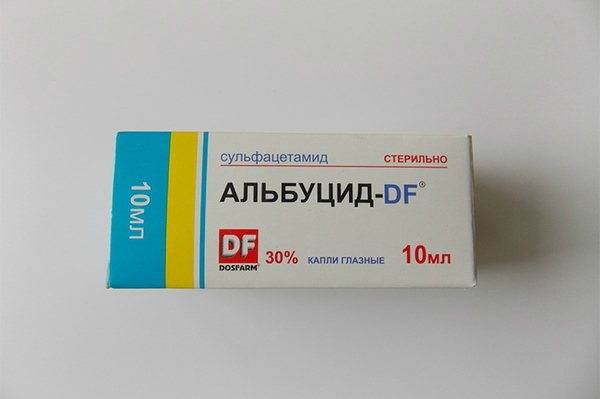
Photo 2. Packaging of the drug Albucid in the form of eye drops with a dosage of 30%. Manufacturer Dosfarm.
They need to be instilled into both eyes at once , even if there is inflammation in only one of them. This will prevent the infection from spreading to the healthy eye.
Doctors also advise using an old method of treating inflammation - washing the eyes with strong black tea. At the same time, bacteria are washed out of the mucous membrane, and tannin, which is contained in tea, is able to relieve tissue swelling.
There are also ointments for inflammation and redness of the eyes. This:
- Erythromycin ointment. Antibacterial ointment that fights pathogenic microorganisms.
- Tetracycline ointment. Restores protein synthesis in cells.
- Phloxal . Fluoroquinolone group of antibiotics. The ointment successfully fights blepharitis, barley, and conjunctivitis. It is often prescribed after eye surgery and after injuries in this area.
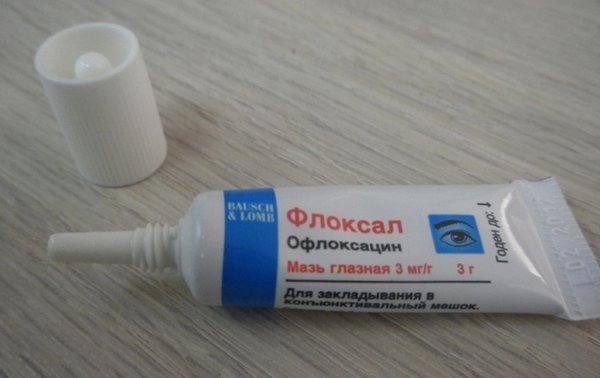
Photo 3. A tube of Floxal in the form of an eye ointment with a dosage of 3 mg/g. Manufacturer: Bausch&Lomb.
- Neladex . This remedy is prescribed for complications of the inflammatory process.
Antiviral, antifungal and antiallergic drugs may be prescribed , depending on what triggered the disease.
Attention! If after three weeks of treatment the result is not visible, then you should see an ophthalmologist again; perhaps the inflammation is not limited to conjunctivitis and there is another serious cause, for example, blockage of the lacrimal duct.
If the sclera is inflamed
The sclera is the same as the cornea, that is, the membrane of the visual organ. Treatment for this inflammation is complex. Both local and general therapy will be required . With inflammation of the sclera, keratitis, scleritis or episcleritis can be diagnosed. Depending on the causative agent of the disease, the doctor will prescribe antifungal, antiviral or antibacterial agents. To strengthen the immune system, your doctor may prescribe a multivitamin.
Anti-inflammatory drugs for the treatment of sclera of the eye
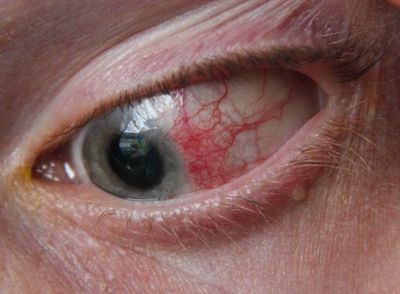
Most often, anti-inflammatory drugs are prescribed for non-infectious inflammation of the visual organs:
- Steroid medications , for example, dexamethasone drops.
- Non-steroidal drugs - eye drops, which contain 0.1% diclofenac solution.
- Combined medications that contain anti-infective and anti-inflammatory substances ( Sofradex, Tobradex and Maxitrol ).
Methods for treating inflammation on the eyelids and tear ducts
Dacryocystitis is an inflammation of the tear duct, which is usually accompanied by redness and inflammation of the eyelids.
Important! Dacryocystitis develops due to blockage or poor patency of the tear ducts, where pathogenic microorganisms begin to accumulate , which, in turn, leads to inflammation.
Constant hygiene, drug therapy, physiotherapy
Treatment is carried out on an outpatient basis; in rare cases, the patient is hospitalized if systemic complications develop. First of all, the doctor prescribes antibiotics and anti-inflammatory drugs. They are taken in a course for 10-14 days.
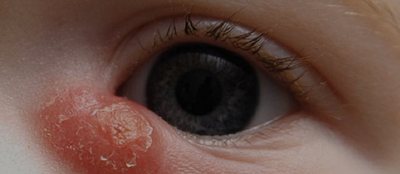
If the infectious process has spread beyond the lacrimal canal, surgery is prescribed.
very important to monitor visual hygiene .
Remove purulent discharge in a timely manner.
Use different towels for each eye, etc.
Non-surgical treatments include :
- Compresses.
- Massage.
- Rinsing , which is carried out as follows: a thin metal probe is inserted through the lacrimal punctum and the flow system, which delivers the medicinal solution into the lacrimal canal. If there is an infectious process, then rinsing is postponed until the end of taking antibiotics. If all these actions have no effect, surgical intervention is prescribed.
Massage of the lacrimal sac in a child
Dacryocystitis often develops in infants. It is not associated with violation of hygiene rules; more often it is a physiological process that can be corrected with massage movements.
But massage of the lacrimal duct is contraindicated in severe cases of the disease , complicated by an extensive inflammatory process. This is due to the fact that pus can get into the tissue and provoke the formation of phlegmon.
The massage technique is as follows (the doctor should initially show it to the parents):
- Its contents are squeezed out of the lacrimal sac.
- The pus is removed with a cotton swab soaked in a furatsilin solution.
- Hand movements should not be too compressive or very weak.
- As a result of these actions, the gelatin membrane is pushed into the channel.
This massage will be effective for infants ; it will not be beneficial for an older child.
Localization of redness
When making a diagnosis, the specialist must pay attention to where exactly the eyelids are red: above, below, under both eyes or just under one.
Under both eyes
The cause of redness around the eyes and the presence of swelling in this case may be an adenoviral infection, allergies, bacterial infection, or dry eye syndrome.
Under one eye
If a child or adult has redness under one eye, this may be a sign of conjunctivitis, barley, furunculosis, herpes, erysipelas, endophthalmitis.
Redness of the eyelids
Constant redness of the eyes and eyelids is associated with vegetative-vascular dystonia, hypothyroidism, cancer, dermatitis, abdominal dropsy, pathologies of the heart and blood vessels.
Symptoms
If the eye is swollen and red, but there are no other symptoms, the most likely cause is external factors, dust, wind, rain or sun. Under such conditions, there are no other symptoms other than lacrimation.
Depending on the cause of the disease, the following additional signs may appear:
- Itchy, gritty eyes and soreness are common signs of a condition called conjunctivitis. It is important to distinguish these signs from deep pain that occurs inside the visual analyzer, which indicates a more serious illness. For example, increased intraocular pressure or iritis.
- Nasal congestion, sneezing and watery eyes indicate allergic conjunctivitis. Increased sensitivity to light appears.
- A sore throat, general malaise, nasal congestion and watery eyes are associated with a cold or viral conjunctivitis.
- Vision is temporarily impaired if the cornea is obscured by fluid or pus. With conjunctivitis, visual perception does not change. Loss of acuity is often accompanied by pain in the eye, but there are exceptions such as blockage of blood vessels or hemorrhage.
Other signs include asthenopia, pain, burning, proptosis, and headache.
Photo

Diagnosis of the disease
Puffiness, swelling around the eyes, redness and peeling are a clear sign that you need to visit an ophthalmologist, especially when similar symptoms are observed in a small child.
The doctor will conduct a visual examination and, if necessary, prescribe laboratory or hardware diagnostics:
- general blood and urine testing;
- biopsy;
- histology;
- allergy tests;
- Ultrasound.
Based on the results of the examination, a diagnosis will be made and treatment will be prescribed.
Homeopathic treatment
Practice shows that homeopathic remedies can relieve a patient from a wide variety of ailments, without causing addiction or side effects . However, in no case is it recommended to self-medicate , but to first consult with your homeopathic doctor.
Important! Homeopathic medicines that can quickly and effectively eliminate redness and swelling of the eye.
| Drugs | Purpose |
| Apis (Apis) | Redness and swelling of the eyes. |
| Arnica (Arnica) | For traumatic conjunctivitis type “3C”. |
| Arsenicum Album (Arsenicum Album) | For frequent eye inflammation. |
| Belladonna (Belladonna) | If the redness of the eyes is pronounced, there is itching and burning of the eyelids. |
| Calcarea Carbonica | With swollen, reddened eyelids. |
| Causticum (Causticum) | For swollen, reddened eyes with obvious signs of burning and pain. |
| Lycopodium (Lycopodium) | For red, swollen eyes, often with symptoms of styes. |
Treatment of pathology
Therapeutic measures depend on the identified pathological process. The specialist, based on the individual characteristics of the patient (weight, age) and the severity of the disease, can prescribe the following medications:
Antiallergic drugs
The following drugs are used:
- Visine (cost 370 rubles);
- Allergodil (costs 450 rubles)
- Ketotifen (cost from 80 rubles).
Visin Allergodil Ketotifen
In advanced cases, drugs containing hormones are prescribed:
- Dexapos (cost 70 rubles);
- Dexamethasone (costs 120 rubles);
- Maxitrol (price 560 rubles).
Antiviral drugs
They strengthen the immune system, eliminate infection, reduce the risk of complications and exacerbations, relieve pain, and speed up the healing process:
- Oftalmoferon (cost 270 rubles);
- Oftan Idu (cost from 90 rubles);
- Poludan (costs from 95 rubles);
- Aktipol (costs from 270 rubles);
- Adgelon (cost from 650 rubles);
- Tobradex (price 446 rubles);
- Futsitalmic (costs 266 rubles);
- Okomistin (cost 170 rubles).
Oftalmoferon Oftan Poludan Actipol Adgelon Torbadex Fucithalmic Okomistin
Antimicrobials
For infectious diseases, the use of antibacterial eye drops is indicated, among which the following are considered the most popular and effective:
- Tobrex (cost from 170 rubles);
- Tsifran (costs 187 rubles);
- Gentamicin (costs 95 rubles);
- Levomycetin . Can relieve red eyes in infants and adults. Inexpensive, accessible drug. Costs 60 rubles.
Torbex Cifran Gentamicin Levomycetin
Remedies against demodicosis
Dermatologists prescribe antibiotics for dermodicosis:
- Trichopolum (cost 83 rubles);
- Ornidazole (cost 94 rubles);
- Metronidazole (costs 160 rubles).
Ornidazole Trichopolum Metronidazole
Additionally, immunomodulators and sedatives are used.
Treatment for eye irritation
Treatment for redness caused by eye irritation is based on:
- using cold compresses and tea bags. They remove swelling, redness, and discomfort;
- washing eyes with rose water. 5 drops of the product are dissolved in a glass of warm water and the procedure is carried out in the morning and evening hours. Rinsing is done by instilling the prepared solution with a pipette, 3-5 drops each;
- using herbal infusions as compresses. They help remove dryness and redness if you steam a large spoonful of herbal raw materials in a glass of boiling water, leave for half an hour, strain, soak pieces of cloth in the prepared solution and apply to the eyelids for 5-7 minutes.
Traditional methods of treatment
When deciding how to remove painful redness and burning in the eyelid area using folk methods, it is necessary to exclude ophthalmological diseases, photos of which can be viewed on the Internet.
They help a lot:
- Parsley or dill lotions. Fresh herbs are finely chopped and wrapped in clean gauze pieces, and then applied to the eyes for 10 minutes.
- Chamomile decoction. Gauze is soaked in it and also applied to the eyelids.
- Baking soda can remove redness if you soak gauze in a weak soda solution and apply it to your eyelids.
- Fresh brewed black tea. A proven method that can help relieve redness, swelling and flaking around the eye area. To do this, pour boiling water over the tea leaves, soak cotton swabs in it and apply to problem areas for 10-15 minutes.
What to do if redness is caused by eye fatigue? Traditional healers and ophthalmologists recommend blinking more often when working at the computer, monitoring the air humidity in the room, doing eye exercises, enriching your diet with vitamins, and spending time in the fresh air more often.
What can't you do?
If it itches around the eyes and the redness greatly spoils the appearance, you really want to relieve the discomfort as quickly as possible. Therefore, people often resort to a variety of untested remedies and advice that can harm and worsen the situation.
Without knowing how to remove an unpleasant symptom, you should not:
- lubricate the skin with fatty cream, oil, herbal decoctions (especially for allergies and burns);
- steam your facial skin;
- apply decorative cosmetics, trying to mask the inflammation;
- use exfoliating scrubs;
- rub damaged skin, even if you really want to do it. In this case, you can rub your eyebrows, which will relieve the itching sensation in the affected eye.
Important! You cannot self-medicate when it comes to ophthalmological problems. All medications that will come into contact with the organs of vision (ointments, drops, solutions) should be prescribed by an experienced specialist after diagnosis.
Preventing redness
In order not to wonder how to remove redness and swelling in the eyelids and eyes, you need to follow simple rules:
- promptly treat chronic systemic diseases;
- do not use low-quality cosmetics;
- eat properly and balanced, supplementing your diet with multivitamin complexes;
- do not visit public places during epidemics;
- do not contact with allergens;
- Take antihistamines in a timely manner during seasonal exacerbations of allergies.
Preventive measures will help reduce the risk of exposure to external and internal irritants on the skin of the eyes, although it will not be possible to completely protect against various diseases. In this case, you need to promptly contact a specialist who will tell you how to treat the pathology and how to remove redness on the skin.
Eyelid swollen and red in the morning: causes
- Swelling of the upper eyelids often appears after sleep. This is usually caused by stagnation of fluid in the body, which can occur as a result of:
- drinking alcohol;
- late dinner consisting of too salty foods;
- drinking tea or water in large quantities before bedtime;
- overwork;
- insomnia;
- crying or stress.

Redness of the eye or eyelids due to swelling may indicate a large volume of fluid in the intercellular space. Hyperemia develops due to overcrowding of blood vessels, which occurs with severe edema. This symptom can also occur due to tears. A man rubs his eyes with his hands, and in the morning he discovers that they are swollen and red.
What should you do to get rid of these symptoms caused by natural causes? The only way to quickly get rid of swollen eyelids and red eyes is to use lotions, compresses or lymphatic drainage massage. It is also recommended to restore the balance of salts and fluids in the body. The swelling will not disappear completely. They will disappear only after you rest and get enough sleep.





